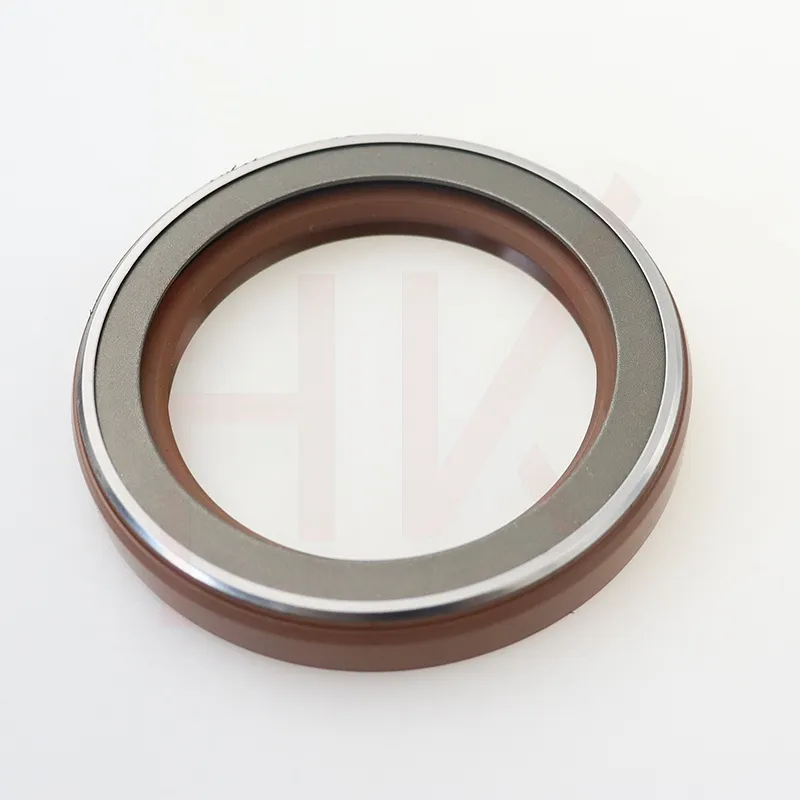Nov . 24, 2024 11:50 Back to list
cylinder wiper seal
Understanding Cylinder Wiper Seals Key Components for Hydraulic Systems
In the world of hydraulic systems, efficiency and reliability are paramount. One critical component that ensures the smooth operation of hydraulic cylinders is the wiper seal, specifically designed for cylinders. This article explores the importance, functionality, and types of cylinder wiper seals, highlighting their role in maintaining hydraulic system integrity.
What is a Cylinder Wiper Seal?
A cylinder wiper seal, often referred to simply as a wiper or dust seal, is a sealing component that fits at the rod end of a hydraulic cylinder. Its primary purpose is to prevent contaminants such as dirt, dust, and moisture from entering the cylinder. These seals act as the first line of defense, protecting sensitive internal components from external abrasives that can cause wear and tear.
Importance of Wiper Seals
The functionality of hydraulic systems heavily relies on the effective performance of wiper seals. When contaminants infiltrate the hydraulic cylinder, they can lead to a host of issues, including premature wear of the piston seal, reduced efficiency, and even catastrophic failures. By using wiper seals, operators can significantly extend the lifespan of the hydraulic system, reduce maintenance costs, and enhance operational efficiency.
Moreover, wiper seals help to maintain the fluid integrity within the cylinder. When properly functioning, they trap the hydraulic fluid inside the cylinder while keeping contaminants out. This is crucial because a well-sealed system operates more efficiently, delivering better performance and responsiveness.
Types of Cylinder Wiper Seals
cylinder wiper seal

There are various types of cylinder wiper seals, each designed to cater to specific applications and environmental conditions. Common materials used in wiper seals include polyurethane, nitrile, and silicone. Each material offers distinct advantages and is suited for different operational environments.
1. Polyurethane Wiper Seals Known for their durability and resistance to abrasion, polyurethane wiper seals are ideal for rugged environments. They can withstand high pressures and temperatures, making them suitable for heavy-duty applications.
2. Nitrile Wiper Seals These are commonly used due to their versatility and good resistance to oils and fuels. Nitrile seals are effective in applications where exposure to petroleum-based fluids is likely.
3. Silicone Wiper Seals While silicone seals may not be as robust as polyurethane or nitrile, they offer excellent temperature resistance. They are often used in applications that involve extreme thermal fluctuations.
Installation and Maintenance
Proper installation of wiper seals is crucial for their performance. They should fit snugly against the rod and the housing to create an effective barrier against contaminants. Regular inspection and maintenance of the wiper seals can help detect wear and prevent costly repairs. Signs of wear include tearing, cracking, or deformation, which necessitate prompt replacement to avoid further damage to the hydraulic system.
Conclusion
Cylinder wiper seals play a vital role in the longevity and efficiency of hydraulic systems. By preventing contaminants from entering the cylinder, these seals safeguard the system's integrity and enhance overall performance. Understanding the different types of wiper seals and their specific applications can help operators make informed decisions, ensuring their hydraulic systems remain functional and efficient for years to come. Investing in quality cylinder wiper seals is not just about compliance; it is a commitment to operational excellence.
-
TCN Oil Seal Metal Ring Reinforcement for Heavy Machinery
NewsJul.25,2025
-
Rotary Lip Seal Spring-Loaded Design for High-Speed Applications
NewsJul.25,2025
-
Hydraulic Cylinder Seals Polyurethane Material for High-Impact Jobs
NewsJul.25,2025
-
High Pressure Oil Seal Polyurethane Coating Wear Resistance
NewsJul.25,2025
-
Dust Proof Seal Double Lip Design for Construction Equipment
NewsJul.25,2025
-
Hub Seal Polyurethane Wear Resistance in Agricultural Vehicles
NewsJul.25,2025
-
The Trans-formative Journey of Wheel Hub Oil Seals
NewsJun.06,2025
Products categories
















